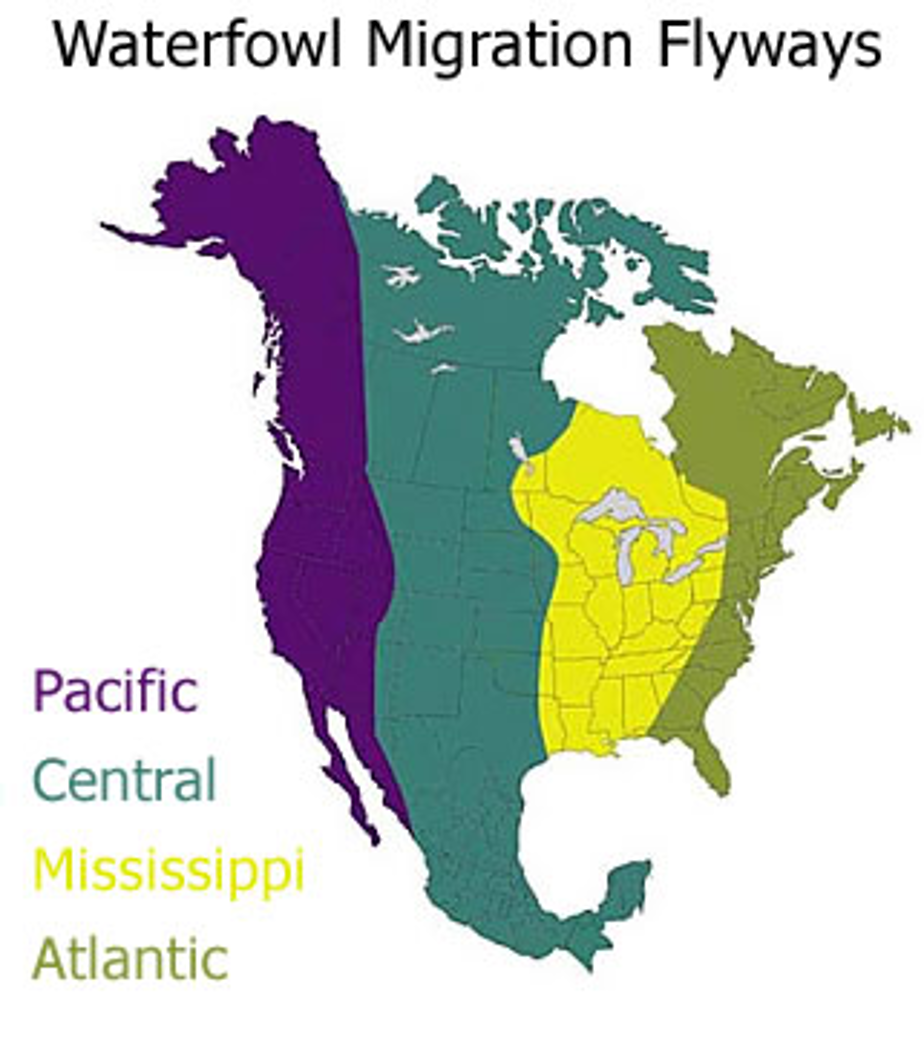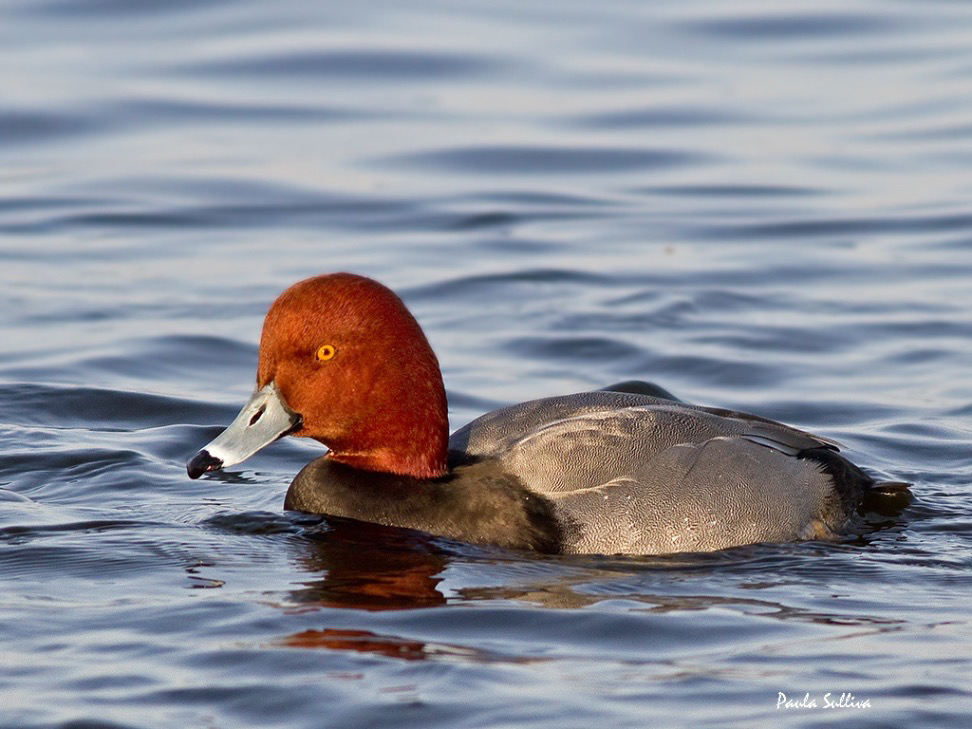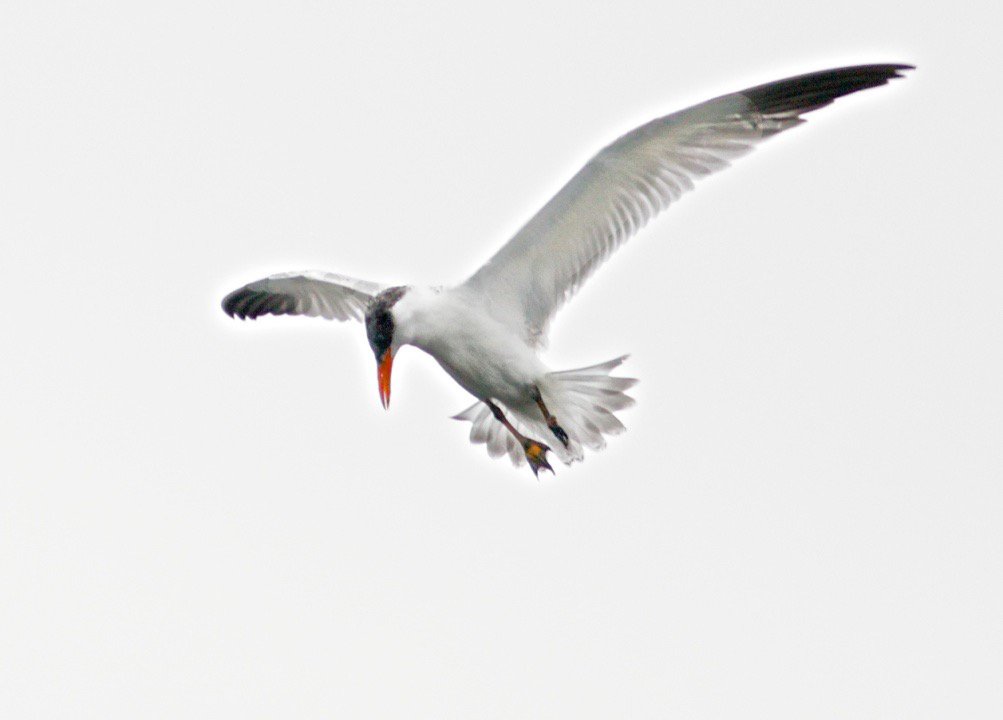The Potomac River and associated habitats are prime areas for many wintering waterbird species, Greg Butcher told FODMers and friends at their October 20, 2021, meeting on Zoom.
 |
|
| Map by Ducks Unlimited | |
Greg Butcher is Vice President of the Audubon Society of Northern Virginia (ASNV) and the Migratory Species Coordinator for the U.S. Forest Service’s International Programs.
Scientists term the routes that migratory birds use as “flyways.” In the western hemisphere, there are four major ones: the Pacific, Central, Mississippi and Atlantic. The Potomac River is in the Atlantic flyway. Some birds pass through in the fall and spring and some migrate from northern regions and spend the winter on the Potomac and its embayments.
The National Audubon Society has designated a stretch of the Potomac River from Dyke Marsh to King George County and generally east of Interstate 95 to the river, as an IBA, an “important bird area,” worthy of conservation, one of 2,758 IBAs designated by the National Audubon Society. ASNVers are the stewards of the area and members document bird sightings and support conservation activities to support the bird population.
To watch Greg’s presentation, click here.
Here are a few highlights from his talk:
- Waterbird and waterfowl populations tend to trickle into the area in October and November and peak in December.
- The abundance of birds on the river is somewhat dependent on submerged aquatic vegetation (SAV). Additionally, if northern lakes freeze, birds will migrate to the Potomac. When a cold front comes through, ducks often arrive.
-
Many types of birds use the river, including waterfowl, shorebirds, loons, hawks, songbirds and swans.
Redhead duck (Aythya americana)
Photo by Paula Sullivan - People can see bald eagles (Haliaeetus leucocephalus) almost daily on and along the river.
- Common wintering ducks include diving ducks like canvasbacks (Aythya valisineria), redheads (Aythya americana), lesser scaup (Aythya affinis), greater scaup (Aythya marila) and several merganser species.
- The waterfowl courtship behavior of some species can be intriguing. For example, male mallards (Anas platyrhynchos), common goldeneyes (Bucephala clangula), ruddy ducks (Oxyura jamaicensis) and buffleheads (Bucephala albeola), bob their heads to attract females. “Females are overwhelmed by it and start breeding,” Greg quipped.
- Wigeons whistle; they don’t quack.
- American coots (Fulica americana) are not ducks, but are related to rails. “Bald eagles love to dive bomb coots,” he commented.
- Observers can see common loons (Gavia immer), generally associated with northern lakes, in places like Mason Neck’s Belmont Bay in the winter.
- Common gulls on the Potomac include the great black backed (Larus marinus), herring (Larus argentatus) and ring billed (Larus delawarensis). It takes most gulls two to four years to get their adult plumage. Immature gulls are especially difficult to identify.
 |
|
| Caspian tern (Hydroprogne caspia) Photo by Ed Eder |
Call to Action
Over three billion birds have been lost in the last 50 years, Greg said. He urged the attendees to support habitat restoration, like the National Park Service’s and FODM’s projects underway in Dyke Marsh; to plant native plants; stop invasive plants from getting established; and avoid pesticides, herbicides and fertilizers.
ASNV will lead its annual waterfowl survey in February 2022.
Cosponsors of the meeting were the Audubon Society of Northern Virginia, the Northern Virginia Bird Club and the Virginia Society of Ornithology.

